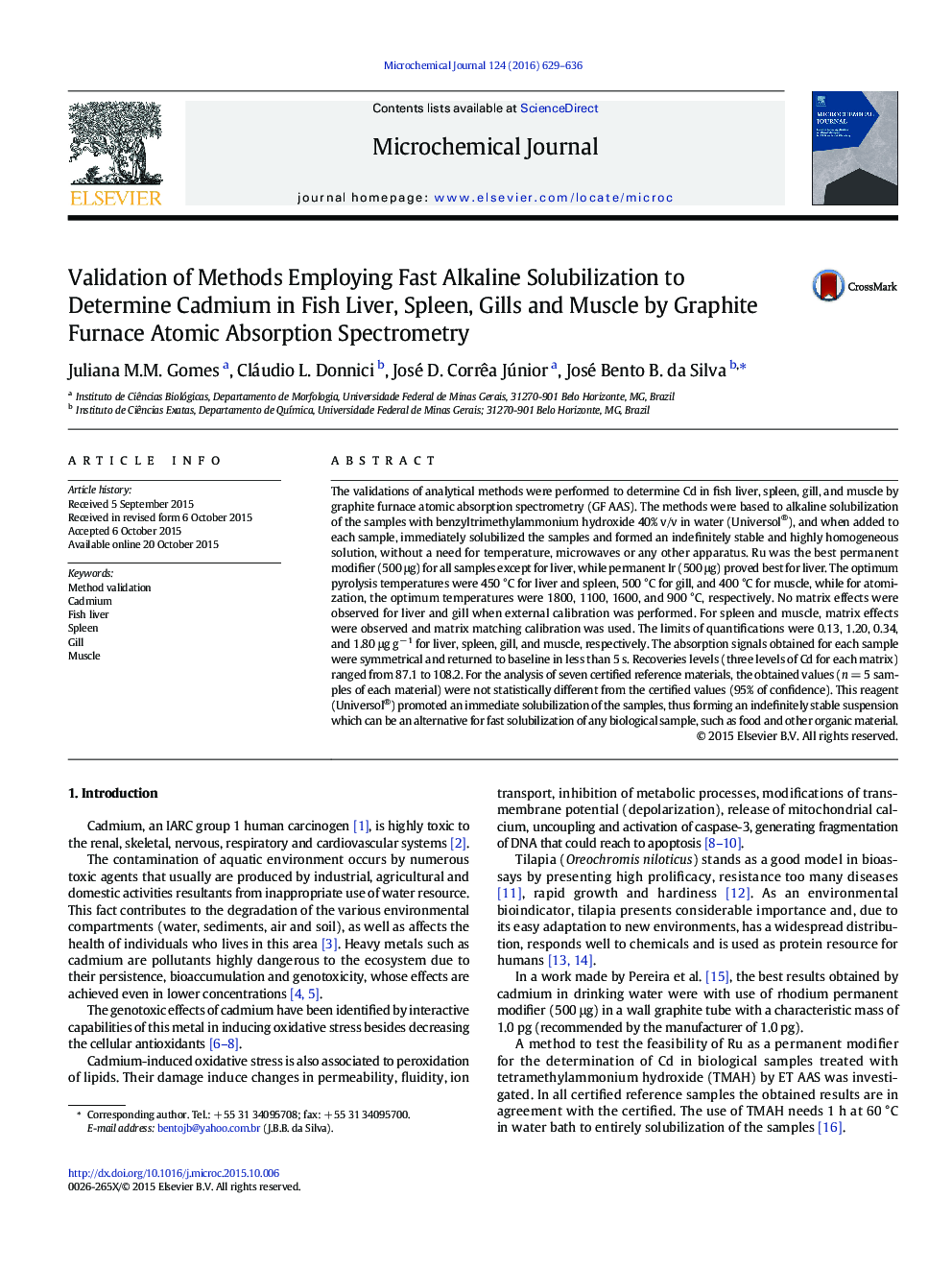| Article ID | Journal | Published Year | Pages | File Type |
|---|---|---|---|---|
| 7642405 | Microchemical Journal | 2016 | 8 Pages |
Abstract
The validations of analytical methods were performed to determine Cd in fish liver, spleen, gill, and muscle by graphite furnace atomic absorption spectrometry (GF AAS). The methods were based to alkaline solubilization of the samples with benzyltrimethylammonium hydroxide 40% v/v in water (Universol®), and when added to each sample, immediately solubilized the samples and formed an indefinitely stable and highly homogeneous solution, without a need for temperature, microwaves or any other apparatus. Ru was the best permanent modifier (500 μg) for all samples except for liver, while permanent Ir (500 μg) proved best for liver. The optimum pyrolysis temperatures were 450 °C for liver and spleen, 500 °C for gill, and 400 °C for muscle, while for atomization, the optimum temperatures were 1800, 1100, 1600, and 900 °C, respectively. No matrix effects were observed for liver and gill when external calibration was performed. For spleen and muscle, matrix effects were observed and matrix matching calibration was used. The limits of quantifications were 0.13, 1.20, 0.34, and 1.80 μg gâ 1 for liver, spleen, gill, and muscle, respectively. The absorption signals obtained for each sample were symmetrical and returned to baseline in less than 5 s. Recoveries levels (three levels of Cd for each matrix) ranged from 87.1 to 108.2. For the analysis of seven certified reference materials, the obtained values (n = 5 samples of each material) were not statistically different from the certified values (95% of confidence). This reagent (Universol®) promoted an immediate solubilization of the samples, thus forming an indefinitely stable suspension which can be an alternative for fast solubilization of any biological sample, such as food and other organic material.
Related Topics
Physical Sciences and Engineering
Chemistry
Analytical Chemistry
Authors
Juliana M.M. Gomes, Cláudio L. Donnici, José D. Corrêa Júnior, José Bento B. da Silva,
